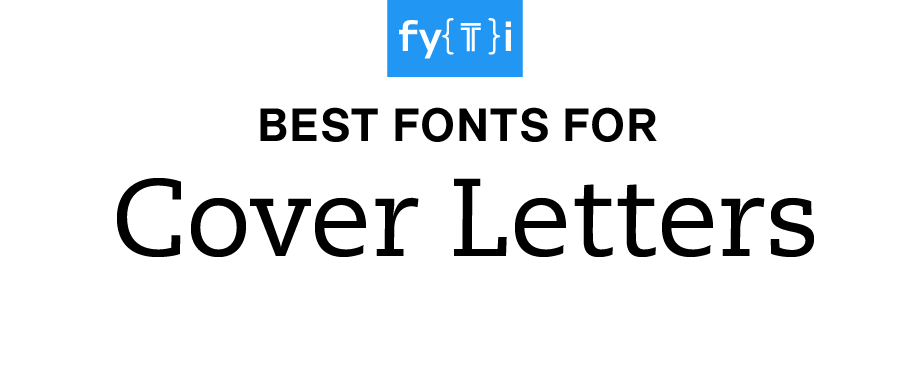Best Fonts for Cover Letters

What are the best fonts for cover letters?
That’s easy. It’s the same font you used for your resume. By using the same fonts for the cover letter and resume, you are visually building and reenforcing your brand. In fact, it’s not a good idea to use different fonts for each document.
Best Fonts for Cover Letters
What’s the Best Size Font for Cover Letters?
The best size font for cover letters is between 10 point and 14 point. It’s important that your cover letter fits on one page. If it runs over a page, drop down a point size or two. Never, however go below 10 point – even if your letter doesn’t fit on one page. Sometimes adjusting the margins can also keep the cover letter to one page.
If the font size is too small, the hiring manager may pass your letter over in favor of easier-to-read letters, and automated scanning systems may be unable to read the small print.
Take Advantage of White Space
Typographic communication is as much about managing the white space as it is the black stuff that sits on top of it. White space is your friend. It creates an inviting letter and goes a long way toward creating hierarchy. Mismanaged white space in cover letters is usually found in the form too much text copy – and not enough white space.
Add a space between each section: contact information, salutation, opening paragraph, middle paragraph, closing paragraph and complimentary closing. The standard business margin is 1-inch on all sides, text copy line spacing should be 1.15. Once the formatting is squared away, your job is to make sure your cover letter is concise, relevant, and easy to read.
Avoid Using More Than One Font
Once you’ve chosen a font, stick to it throughout your entire cover letter. If you want to create a little hierarchy, use a different size or weight of the same font.
Three Paragraph Cover Letter Example
Opening Paragraph
State why you are writing; how you learned of the organization or position, and basic information about yourself. This is also the “grabber” to pique the reader’s interest. Keep the copy brief and punchy.
Second Paragraph
Explain why you are interested in the employer or type of work the employer does. Demonstrate that you know enough about the employer or position to relate your background to the employer.
Mention specific qualifications which make you a good fit for the employer’s needs. This is an opportunity to explain in more detail relevant items in your resume. Don’t, however, repeat bullet points from your resume.
Third Paragraph
Restate your interest in this position and how your unique qualifications fit the position. Request an interview or tell the reader that you will contact soon to schedule a mutually convenient time to meet. Thank readers for their time and consideration.
Save your file correctly
Save your cover letter as a PDF file to preserve its original appearance and font style. To do this, click <File> in your word processing software and choose <Save As>. Select the PDF file format from the dropdown and click Save.
You can also click <Print>, to print your cover letter and then click <Save as PDF> in the PDF dropdown menu.
List of Best Fonts for Cover Letters
Avenir Next
Avenir Next Regular
Avenir Next Italic
Avenir Next Demi
PMN Caecilia
PMN Caecilia 55 Roman
PMN Caecilia 56 Italic
PMN Caecilia 75 Bold
Neue Frutiger
Neue Frutiger Book
Neue Frutiger Book Italic
Neue Frutiger Bold
Helvetica Now
Helvetica Now Text Regular
Helvetica Now Text Italic
Helvetica Now Text Bold
Mercury
Mercury Text G2 Regular
Mercury Text G2 Italic
Mercury Text G2 Semibold
FF Meta Correspondence
FF Meta Correspondence Regular
FF Meta Correspondence Italic
FF Meta Correspondence Bold
Sabon Next
Sabon Next Regular
Sabon Next Italic
Sabon Next Bold